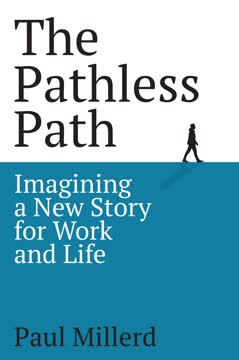重点摘要
1. 偶然性是一种可以培养的技能,而不仅仅是随机的运气
偶然性不仅仅是发生在我们身上的事情——它是一种具有独特特征的现象,这些特征可以在我们的生活中得到培养。
定义偶然性。 偶然性是意外发现有价值的东西,然后通过洞察力将其与有意义的事物联系起来。这不仅仅是偶然,而是一个可以被影响和发展的过程。
偶然性的组成部分:
- 偶然性触发:意外事件或信息
- 双联想:连接看似无关的想法
- 智慧:识别潜在价值的智慧
- 坚韧:坚持不懈的决心
培养偶然性。 通过理解这些组成部分,我们可以积极增加体验偶然性的机会。这涉及到培养一种对意外机会保持警觉的心态,对多样化主题的好奇心,以及愿意探索不同想法之间联系的意愿。培养偶然性的能力成为个人成长、创新和在日益不可预测的世界中取得成功的强大工具。
2. 培养开放和准备好的心态以识别偶然的机会
机会只青睐有准备的头脑。
心理准备。 开放和准备好的心态对于识别和利用偶然的机会至关重要。这涉及到培养好奇心,保持广泛的知识基础,并愿意探索自己通常领域之外的想法。
实用策略:
- 在对话中练习积极倾听
- 定期通过多样化的阅读接触新想法
- 参与跨学科学习
- 反思经验以识别潜在的联系
- 保持“偶然性日记”以记录意外观察
平衡专注和开放。 虽然有目标和专注很重要,但保持一定程度的开放性可以识别意外的机会。这种平衡使您能够追求目标,同时对可能有价值的绕道或新方向保持开放态度,这些可能会偶然出现。
3. 克服偏见和成见使偶然性得以蓬勃发展
知识和专业知识在偶然性方面既是福也是祸。
识别认知偏见。 我们的大脑自然会寻找模式,并倾向于根据既有信念和经验过滤信息。虽然这可能是高效的,但也可能使我们对新颖的机会和联系视而不见。
阻碍偶然性的常见偏见:
- 确认偏见:寻找确认现有信念的信息
- 功能固着:难以看到熟悉物品的替代用途
- 可得性启发:过高估计容易回忆的信息
- 现状偏见:偏爱当前状态
克服偏见。 积极挑战我们的假设并寻求多样化的观点可以帮助克服这些偏见。诸如禅宗哲学中的“初学者心态”、横向思维练习以及故意接触相反观点等技巧都可以促进更开放的心态,有利于偶然性。
4. 将挑战重新定义为机会以释放偶然的潜力
我们常常在没有模式的地方看到模式,然后将幸运的结果归因于我们的个人特征和努力,而不是盲目的运气。
重新定义的力量。 我们如何感知和解释事件显著影响我们识别和利用偶然机会的能力。将挑战重新定义为成长和学习的机会可以打开新的可能性。
重新定义技巧:
- 问“我能从中学到什么?”而不是“为什么这会发生在我身上?”
- 从多个角度考虑一个情况
- 在挫折中寻找潜在的好处
- 对意外事件表示感激,即使最初被视为负面
拥抱不确定性。 重新定义还涉及对不确定性和模糊性感到舒适。与其试图控制情况的每个方面,不如拥抱意外积极结果的潜力。这种心态的转变允许更大的灵活性和对偶然机会的接受度。
5. 创造触发器和连接以增加偶然性的可能性
偶然性依赖于偶然性触发器。我们如何利用这一点为自己谋利?
播种偶然性。 积极创造增加偶然相遇可能性的情境是一项关键技能。这涉及到将自己置于多样化的环境中,并创造“钩子”以邀请意外的联系。
创造触发器的策略:
- 参加多样化的活动和会议
- 广泛分享您的兴趣和当前项目
- 参与跨学科合作
- 使用社交媒体传播和连接想法
- 创造鼓励偶然相遇的物理空间
连接点。 发展在看似无关的想法或事件之间看到联系的能力至关重要。练习在日常情况下识别模式和潜在联系。培养在遇到新信息或经验时问“这如何与……相关?”的习惯。
6. 培养坚韧和智慧以将偶然时刻转化为有价值的结果
偶然性不是单一事件,而是一个依赖于创造和看到触发器并连接点的过程——通过我们自己的努力将机会转化为好运。
智慧的行动。 智慧是识别意外发现中潜在价值的智慧。它结合了知识、直觉和创造性思维。发展智慧需要持续的学习、反思和愿意探索超出明显应用的想法。
坚韧的角色。 识别偶然机会只是第一步。坚韧——坚持不懈地跟进和发展机会的决心——对于将偶然性转化为实际结果至关重要。
发展坚韧:
- 设定明确的目标,同时在方法上保持灵活
- 将较大的项目分解为可管理的步骤
- 在面对挫折时培养韧性
- 寻求他人的支持和责任
- 庆祝沿途的小胜利
7. 通过多样化的网络和社区建立“偶然性场”
社区不仅仅是网络。虽然网络可以帮助我们建立特定的关系,但社区——提供归属感和社会认同的人际关系网络——可以改变我们的基本偶然性水平。
定义偶然性场。 偶然性场是由多样化的联系和经验创造的扩展机会空间。它增加了有意义的偶然相遇和意外洞察的概率。
扩展偶然性场的策略:
- 在不同行业和学科中培养关系
- 参与多样化的兴趣社区
- 利用技术与全球的人们联系
- 参加非传统的网络活动
- 练习“弱联系”网络——保持更广泛、强度较低的联系
质量重于数量。 虽然扩展您的网络很重要,但要专注于建立有意义的联系。寻找与您分享价值观和兴趣的个人和社区,但也挑战您的思维并让您接触新想法。
8. 培养心理安全和创新文化以滋养组织的偶然性
心理安全不是让每个人都感到舒适,也不是一味地友好。相反,正如Edmondson所强调的,它是关于直接表达,并愿意说出何时以及为什么某事没有成功。
创造心理安全。 在组织中,心理安全——相信可以在没有负面后果的情况下发言——对于促进偶然性至关重要。它鼓励分享想法、承认错误和承担经过深思熟虑的风险。
创新文化的要素:
- 鼓励实验和从失败中学习
- 庆祝意外的发现和联系
- 创造空间和时间以促进想法的交叉传播
- 实施灵活的工作结构以允许探索
- 奖励好奇心和主动性
领导的角色。 领导者在塑造组织文化方面发挥关键作用。通过示范对偶然性的开放,承认自己的不确定性,并鼓励多样化的观点,领导者可以创造一个偶然性蓬勃发展的环境。
9. 评估和放大偶然性以随着时间的推移复合其效果
复合偶然性就像复利:基础水平越高,您加速的速度就越快。
衡量偶然性。 虽然偶然性可能感觉无形,但开发评估其发生和影响的方法是有价值的。这可以包括跟踪意外的积极结果,记录想法的交叉传播实例,或评估网络连接的多样性和质量。
放大策略:
- 分享偶然的故事以激励他人
- 创建系统以捕捉和发展意外的想法
- 实施定期反思实践以识别偶然模式
- 开发“偶然性评分”以跟踪个人或组织的进展
- 不断完善和扩展您的偶然性培养实践
复合效应。 随着偶然经历的积累,它们会创造一个积极的反馈循环。每个实例都建立知识,扩展网络,并增加对未来机会的接受度。通过有意识地培养和放大偶然性,个人和组织可以在日益不可预测的世界中创造可持续的竞争优势。
最后更新日期:
FAQ
What's The Serendipity Mindset about?
- Exploring serendipity's role: The book examines how unexpected events and chance encounters can significantly impact our lives and successes. It argues that serendipity is not just blind luck but a process that can be cultivated.
- Creating conditions for luck: Author Christian Busch suggests that we can create environments that foster serendipity, allowing us to recognize and act on unexpected opportunities. This involves being open-minded and proactive.
- Framework for serendipity: The book provides a science-based methodology and practical exercises to help readers develop a "serendipity mindset," essential for navigating life's unpredictability.
Why should I read The Serendipity Mindset?
- Enhance personal and professional life: The book helps you identify and leverage serendipitous moments, leading to greater success and fulfillment. It teaches you to see opportunities where others see obstacles.
- Science-backed insights: Busch combines research from psychology and neuroscience to explain how serendipity works and how it can be harnessed, making the content both informative and applicable.
- Practical exercises included: Filled with actionable advice and exercises, the book encourages readers to practice and cultivate a serendipity mindset in their everyday lives.
What are the key takeaways of The Serendipity Mindset?
- Serendipity is a skill: The book emphasizes that serendipity can be cultivated through awareness and proactive behavior, rather than being left to chance.
- Connect the dots: Recognizing and connecting seemingly unrelated events or ideas can lead to innovative solutions and opportunities, a process referred to as "bisociation."
- Fostering a supportive environment: Creating conditions that encourage collaboration and openness can amplify serendipity in personal relationships and organizational settings.
What is the definition of serendipity according to The Serendipity Mindset?
- Chance meets human action: Busch defines serendipity as "chance interacting with human action, leading to a usually positive outcome," highlighting the interplay between luck and proactive efforts.
- Not just blind luck: The book clarifies that serendipity involves recognizing and acting on opportunities that arise unexpectedly, shifting the understanding of luck from passive to active.
- Creating a serendipity field: The concept of a "serendipity field" refers to the environment and mindset that can be cultivated to increase the likelihood of serendipitous encounters.
What are some practical methods to cultivate a serendipity mindset?
- Keep a serendipity journal: Documenting serendipitous moments and reflections helps in recognizing patterns and triggers that lead to unexpected opportunities.
- Ask open-ended questions: Engaging others with questions like “What’s on your mind?” can lead to deeper conversations and potential connections, opening the door for serendipity.
- Set serendipity bombs: Reaching out to people you admire or want to connect with, even if daunting, can lead to unexpected opportunities and collaborations.
What is the significance of connecting the dots in The Serendipity Mindset?
- Recognizing patterns: Identifying relationships between seemingly unrelated events or ideas can lead to innovative solutions, transforming serendipitous encounters into tangible opportunities.
- Active engagement: Simply having a serendipitous encounter is not enough; one must actively engage with the moment to realize its potential.
- Examples of success: Busch shares stories of individuals who successfully connected the dots, illustrating how this practice can lead to significant breakthroughs.
What are some barriers to serendipity mentioned in The Serendipity Mindset?
- Preconceived notions: Biases and preconceived ideas can blind us to serendipitous moments, preventing us from recognizing opportunities when they arise.
- Fear of failure: Fear of failure or rejection can stifle creativity and limit the potential for serendipity, as individuals hold back from pursuing unexpected opportunities.
- Rigid thinking: Functional fixedness, or the inability to see alternative uses for familiar tools or ideas, can hinder our ability to connect the dots.
What are the best quotes from The Serendipity Mindset and what do they mean?
- "Chance favors the prepared mind.": This quote by Louis Pasteur emphasizes that being open and prepared can lead to unexpected opportunities.
- "You miss one hundred percent of the shots you don’t take.": Wayne Gretzky’s quote serves as a reminder that taking risks and seizing opportunities is essential for experiencing serendipity.
- "Life is what happens to us while we are making other plans.": This quote highlights the unpredictability of life and the importance of being open to unexpected events.
How does the author suggest we can create a supportive environment for serendipity?
- Encourage collaboration: Fostering a culture of collaboration and openness within organizations and communities allows for the free exchange of ideas, increasing the likelihood of serendipitous encounters.
- Design physical spaces: The layout of physical spaces can influence interactions and serendipity, with areas that encourage spontaneous conversations leading to unexpected connections.
- Nurture relationships: Building and maintaining relationships with diverse individuals can enhance the potential for serendipity, encouraging active engagement with networks.
What role does emotional intelligence play in cultivating a serendipity mindset?
- Self-awareness: Understanding our emotions and motivations helps navigate unexpected situations more effectively, allowing us to respond to serendipitous moments with clarity and intention.
- Empathy and connection: Emotional intelligence fosters empathy, enhancing our ability to connect with others and recognize shared experiences, vital for creating an environment where serendipity can thrive.
- Resilience in adversity: Emotional intelligence helps cope with challenges and setbacks, allowing us to remain open to new opportunities even in difficult times, key to experiencing serendipity.
How can I apply the concepts from The Serendipity Mindset in my daily life?
- Practice mindfulness: Being present and aware in daily interactions helps recognize serendipity triggers, encouraging you to notice unexpected opportunities and engage with them.
- Engage in diverse experiences: Exposing yourself to new environments, people, and ideas increases the likelihood of serendipitous encounters, challenging usual routines and expanding horizons.
- Reflect on experiences: Regularly reflecting on experiences and serendipitous moments helps identify patterns and triggers, enhancing the ability to connect the dots in the future.
What is the significance of "serendipity fields" in The Serendipity Mindset?
- Concept of opportunity space: "Serendipity fields" refer to the potential connections and opportunities in our environment, emphasizing that expanding these fields increases the likelihood of positive coincidences.
- Cultivating connections: Actively seeking out and nurturing relationships enhances serendipity fields, involving openness to new experiences and engagement with diverse groups.
- Empowering agency: Understanding and expanding one's serendipity field empowers individuals to take control of their destinies, recognizing potential connections and opportunities to shape paths toward success.
评论
《机缘心态》获得了大多数正面评价,读者称赞其通过开放、好奇和坚持来创造“聪明运气”的见解。许多人认为这本书既鼓舞人心,又适用于个人和职业生活。评论者欣赏书中故事与可操作建议的结合,尽管有些人觉得内容重复或过于侧重于企业案例。书中将意外事件重新定义为机会的信息引起了许多读者的共鸣,尤其是在充满挑战的时期。
Similar Books













